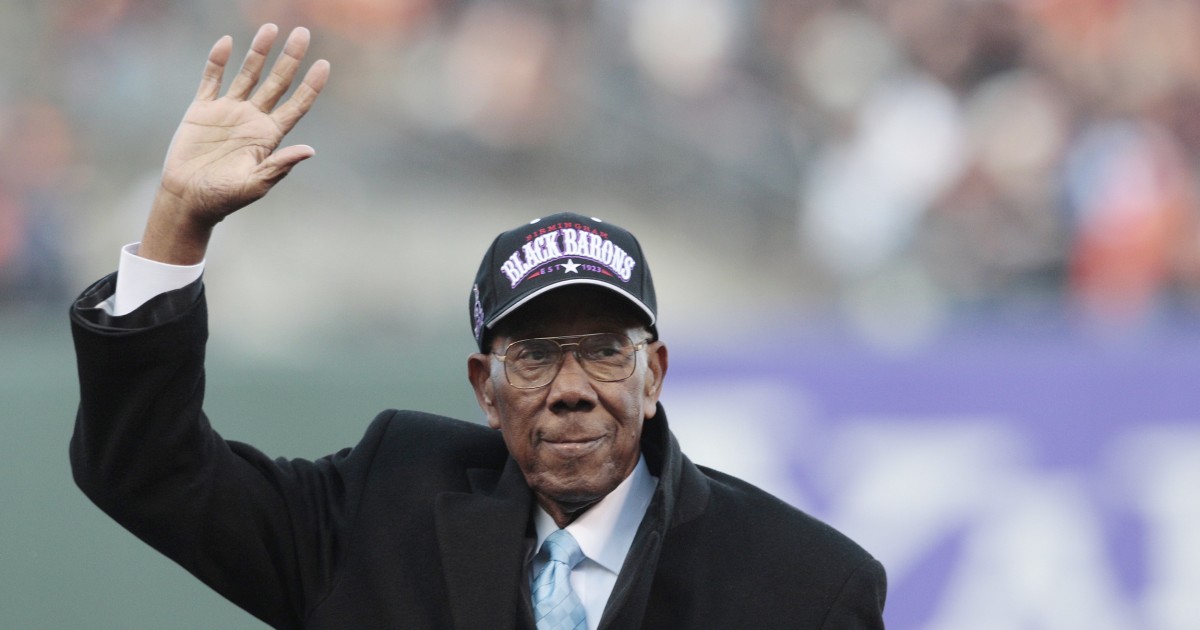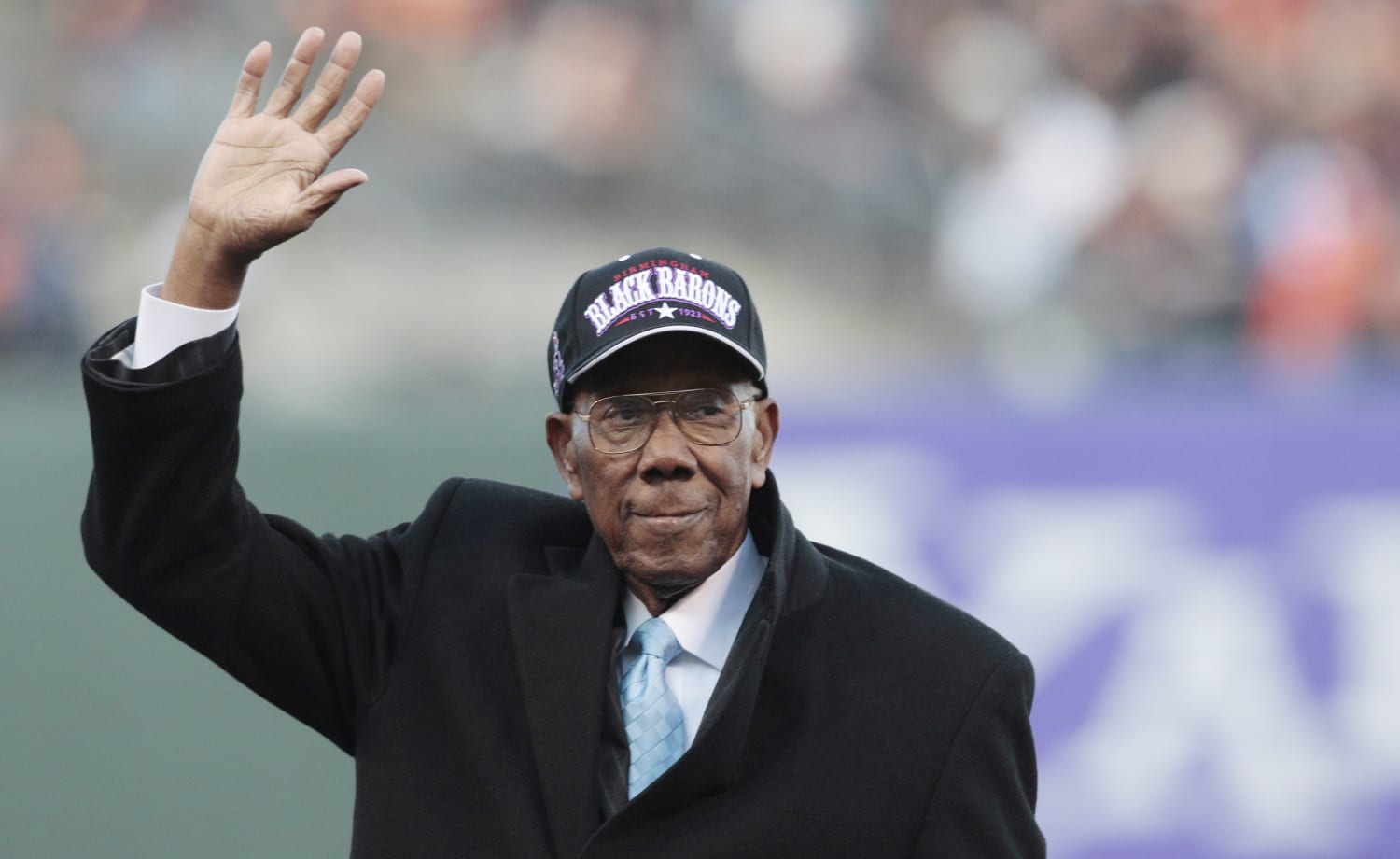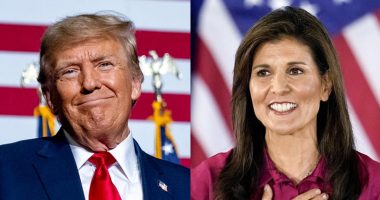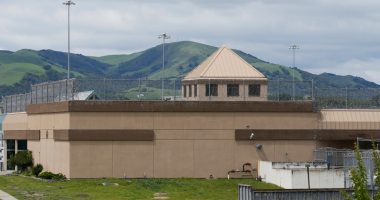
The Rev. Bill Greason said he doesn’t pay much attention to sports these days.
It’s been especially difficult this year, he said, as the pandemic caused a global shutdown of sports at all levels. And at 96, Greason, a World War II veteran who fought at the Battle of Iwo Jima and later pitched for the Birmingham Black Barons of the Negro Leagues, said he spends “a lot of my time studying the Bible” and preparing to deliver sermons to his Alabama parish each Sunday.
But when Greason learned about Major League Baseball’s announcement Wednesday that it was elevating the Negro Leagues to Major League status and recognizing its statistics and records as part of baseball’s history, he had one simple question: What took so long?
“It’s long overdue because practically all the guys that played in the Negro Leagues played in the major leagues,” Greason, who was a Barons teammate of Willie Mays and himself later pitched briefly in the majors for the St. Louis Cardinals, told NBC News. “Once they left the Negro Leagues, they went straight to the (majors) and they produced. Baseball is just baseball. The only thing that kept us apart was the color of our skin, rather than the ability to play.”
Baseball’s record books will be altered as a result of MLB’s announcement, but that change is only one of the many layers of a long-standing national conversation about the Negro Leagues and the proper recognition of its place in history.
Jackie Robinson broke the major leagues’ color barrier in 1947 with the Brooklyn Dodgers, but 22 years later the Special Committee on Baseball Records recognized six additional “Major Leagues” since 1876. That round excluded the Negro Leagues.
Baseball didn’t address pensions as they pertain to Negro Leagues players until 1997, and even then, there were myriad issues, including how to determine eligibility.
Even after MLB Commissioner Rob Manfred announced Wednesday that “we are now grateful to count the players of the Negro Leagues where they belong,” some were swift to blast America’s pastime.
“In the case of Major League Baseball, not only do they write the history books, but apparently they decide when everyone else’s histories are legitimate, too,” the columnist Clinton Yates wrote for The Undefeated. “Negro does not mean less than. And never will.”
Bob Kendrick, the president of the renowned Negro Leagues Baseball Museum in Kansas City, Missouri, said he understands Yates’ point of view. When Kendrick learned that baseball was planning to elevate the Negro Leagues’ status, he said he had a hard time reconciling it.
“There was a part of me that kind of got radical,” Kendrick said. “It was, ‘Hell, we don’t need you to validate us.’ I knew so many of the players and how proud they were. Theyknew how good they were and how good their league was. But nobody else really did. I had to literally step outside myself and say, ‘Be that guy from the outside looking in.’ I started to shift my position. It was about being recognized for historical purposes.
“Now, for me, it is indeed cause for celebration.”
That celebration calls for recognizing and appreciating not just the baseball accomplishments of the approximately 3,400 Negro Leagues players who played from 1920 to 1948 — including Baseball Hall of Famers Mays, Cool Papa Bell, Monte Irvin and Satchel Paige, to name a few — but acknowledging the adversity and racism Negro Leaguers faced and the social climate in which they played.
“My dad would speak so highly of his ‘heroes’ with much respect, gratitude and reverence,” said Pamela Irvin Fields, one of Irvin’s daughters.
Irvin played with Mays on the New York Giants before the franchise relocated to San Francisco in 1958, and for the Newark Eagles of the Negro National League. He died in 2016 at age 96. Irvin Fields added that her father held his Negro League peers in “high esteem, not only for their playing skills, but also their perseverance.”
Monte Irvin’s other daughter, Patricia Irvin Gordon, said baseball’s decision will cast the Negro League players in a new light.
“Conversation of these players will be centered around their performance rather than the challenging circumstances under which they played,” said Irvin Gordon. “Now that these players and stats are melded, the history of MLB becomes that much richer and relevant to those who embrace baseball. My father always felt regardless of the league in which he played, Negro League or Major League, he played with the absolute best players to ever play the sport.”
Jerry Hairston Jr. is part of a three-generation family of major leaguers, and his grandfather, Sam Hairston, was a Negro Leagues star with the Indianapolis Clowns.
“I think if I speak for my grandad, and being around him and other Negro League players, they never needed this announcement to validate their league,” said Hairston, who played for nine major league teams, including the 2009 World Series champion New York Yankees. “‘Elevate’ is not the word. It’s to recognize the Negro Leagues. They were already elevated.”
Kendrick said he views the Negro Leagues Museum as more of a cultural institution than a baseball museum, one that educates visitors about so much more than baseball statistics and achievements on the diamond. He said MLB’s decision Wednesday would go a long way toward changing “the way people see the Negro Leagues for years to come.”
“New generations of baseball fans, when they start learning this game, they don’t see Josh Gibson’s name and his .441 in 1943 on that list of all-time, single-season bests,” Kendrick said, referring to the slugging catcher who was called the “Black Babe Ruth.”
“That’s what I had to look through, that lens, as opposed to that hard stance that I had,” Kendrick continued. “I started to look beyond the validation, and started to think about the recognition and acknowledgement, which is more important to me. You can never reduce the Negro Leagues to numbers. It’s so much bigger than that. That is with the understanding that the Negro Leagues Museum is exactly what it is — a civil rights museum, a social justice museum. It is triumph over adversity.”
Follow NBCBLK on Facebook, Twitter and Instagram.
Source: | This article originally belongs to Nbcnews.com










